12.11.2022

In brief
ESA’s Mars Express spacecraft recently conducted tests in which it relayed data gathered by NASA’s Perseverance rover back to Earth. The 19-year-old spacecraft has now relayed data for seven different Mars surface missions – a unique, new record!
In-depth
Landers and rovers on Mars gather data that help scientists answer fundamental questions about the geology, atmosphere, surface environment, history of water and potential for life on the Red Planet.
To get these insights to Earth, they first transmit the data up to spacecraft in orbit around Mars. These orbiters then use their much larger, more powerful transmitters to ‘relay’ the data across space to large deep-space antennas on Earth.
“Data relay is an essential part of Mars exploration,” says James Godfrey, Mars Express Spacecraft Operations Manager at ESA’s ESOC mission control centre. “We are proud that Mars Express has played a role in the interagency Mars data relay network over many years and has supported so many surface assets. This network will be vital to support future missions to the Red Planet, such as those of the Mars Sample Return campaign.”
The tests with Perseverance coincide with the orbiter’s 10th martian anniversary. Mars Express arrived at Mars on 25 December 2003, almost 19 Earth years ago. As one martian year is equal to approximately 687 Earth days, the spacecraft celebrated 10 martian years in orbit on 16 October 2022.
Take a trip through martian history.
Team Spirit
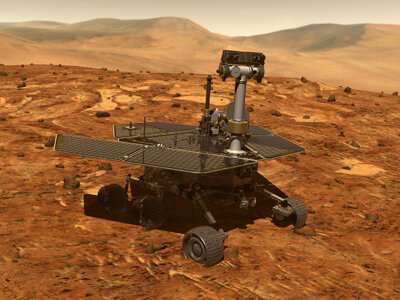
In 2004, just two months after arriving at Mars, Mars Express flew over NASA’s Spirit rover.
The ESA orbiter sent commands down to the rover, which then sent its data up to the orbiter in the first-ever demonstration of an interagency communications network around another planet.
The commands for the rover first had to be transferred from the Spirit Operations Team at NASA's Jet Propulsion Laboratory (JPL), USA, to ESOC in Germany. Here they were translated into commands for Mars Express, then uplinked to the orbiter and sent down to the rover.
Opportunity knocks
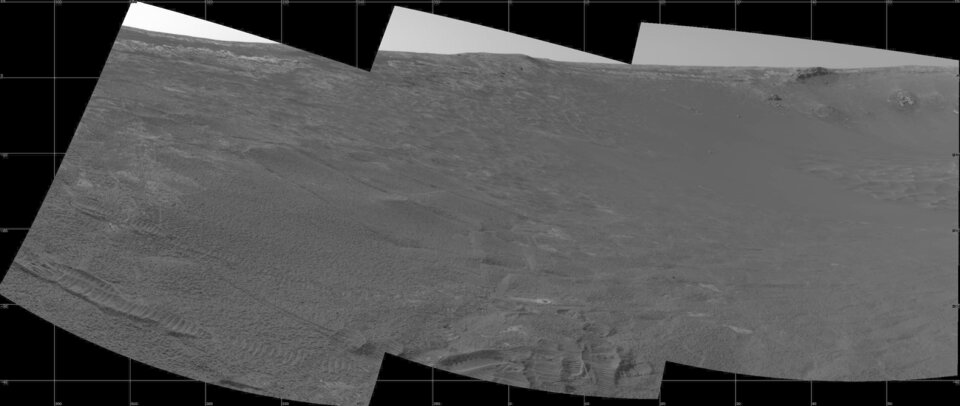
Seven further communication tests were carried out between Mars Express and NASA’s Opportunity rover in early 2008. Building on the tests with Spirit, they helped optimise ESA-NASA communication at Mars.
The landing of Phoenix
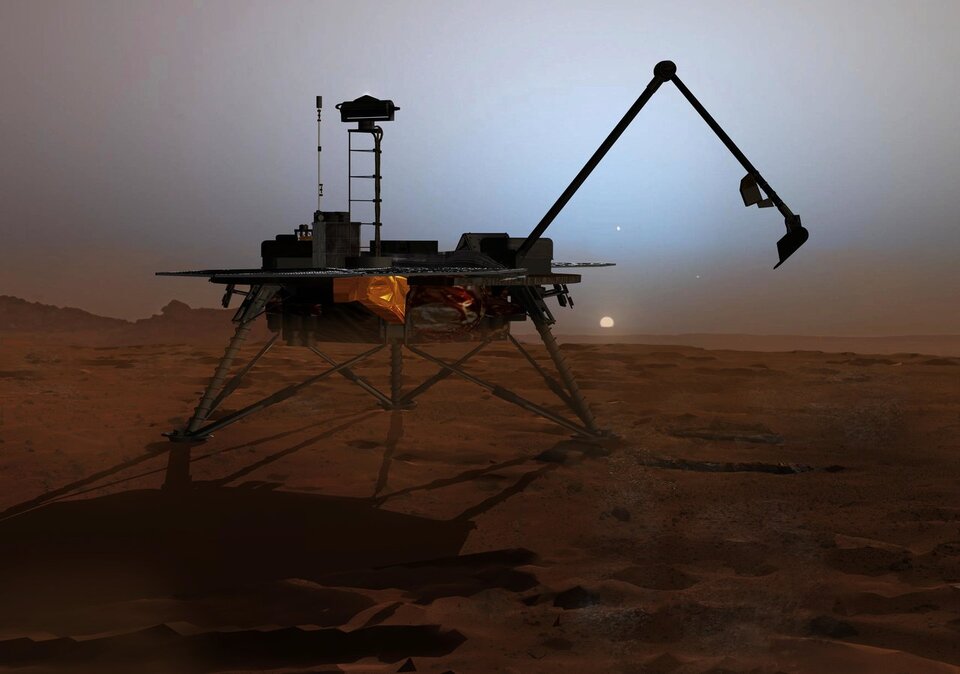
On 25 May 2008, Mars Express tracked the descent of the Phoenix lander and relayed the data to NASA to help confirm the data from their own orbiters. In the weeks after landing, Mars Express once again demonstrated its ability to reliably relay data from the martian surface to Earth.
Curiosity rocks
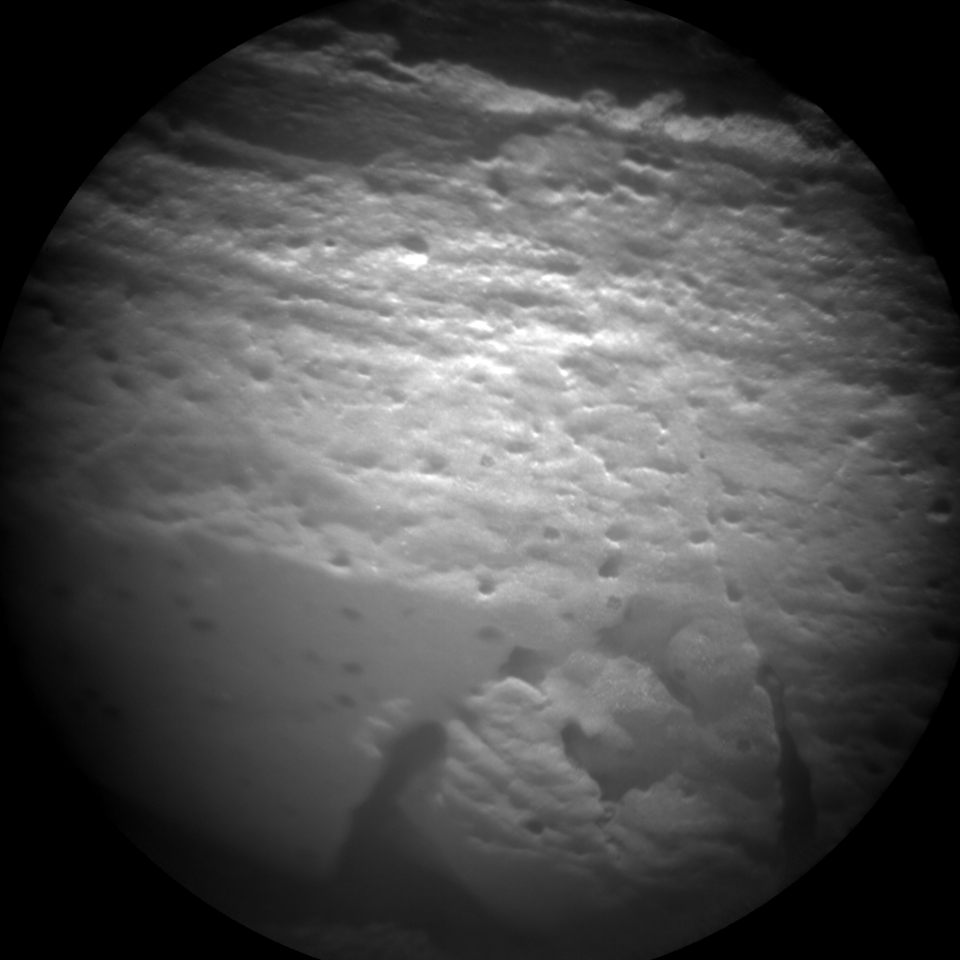
In 2012, Mars Express was trusted to relay crucial science data from NASA’s Curiosity rover back to Earth. It was a small but significant next step for interplanetary cooperation between space agencies.
Early on the morning of 6 October, the ESA orbiter lined up its lander communication antenna to point at Curiosity far below on the surface.
For 15 minutes, the NASA rover transmitted scientific data up to the ESA satellite, before Mars Express turned to point its more powerful high-gain antenna toward Earth and began downlinking the precious information.
The data included this image of a rock acquired by Curiosity during the first soil analyses made using its mobile laboratory. Mars Express downlinked the image to ESOC in Germany via ESA’s 35 m-diameter deep-space antenna in New Norcia, Australia. All the relayed data were then immediately made available to JPL in California for processing and analysis.
Closer cooperation InSight
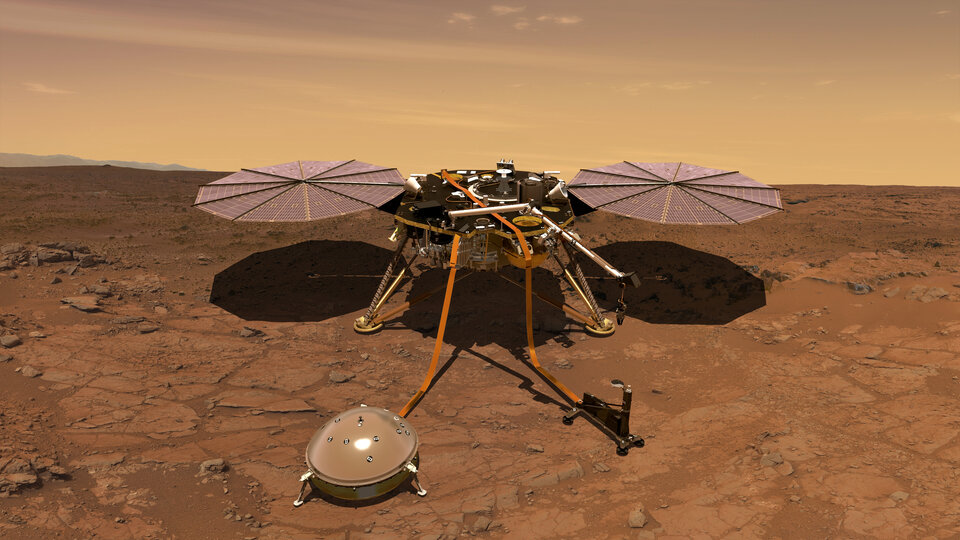
It was Mars Express’s younger sibling, ESA’s Trace Gas Orbiter, that took the next step and established the first-ever routine interplanetary data relay support between agencies when it began supporting NASA’s InSight lander. But Mars Express continued its important work acting as contingency support for yet another new lander.
Zhurong calling
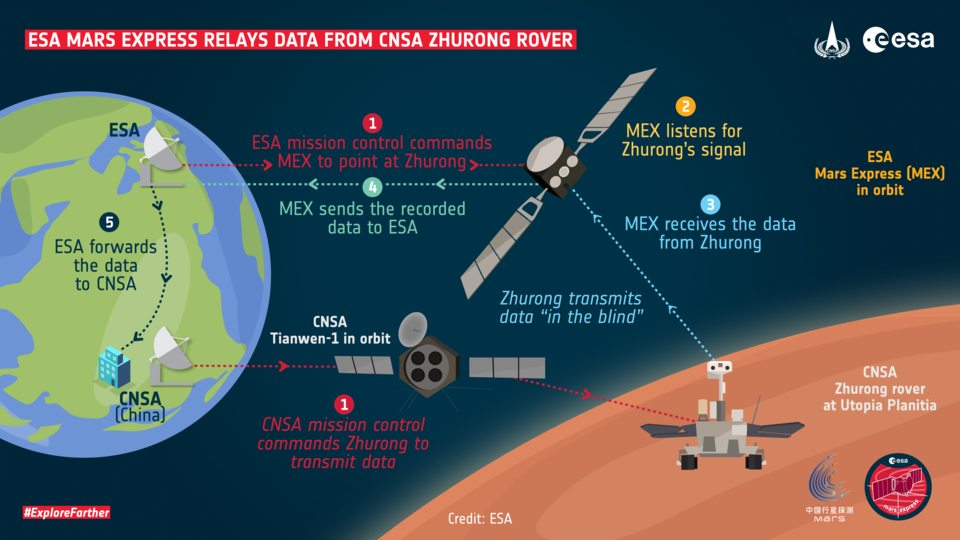
Over the last year, Mars Express has conducted tests with the CNSA Zhurong rover to assess radio system compatibility and the possibility of supporting data relay with the rover.
Perseverance pays off
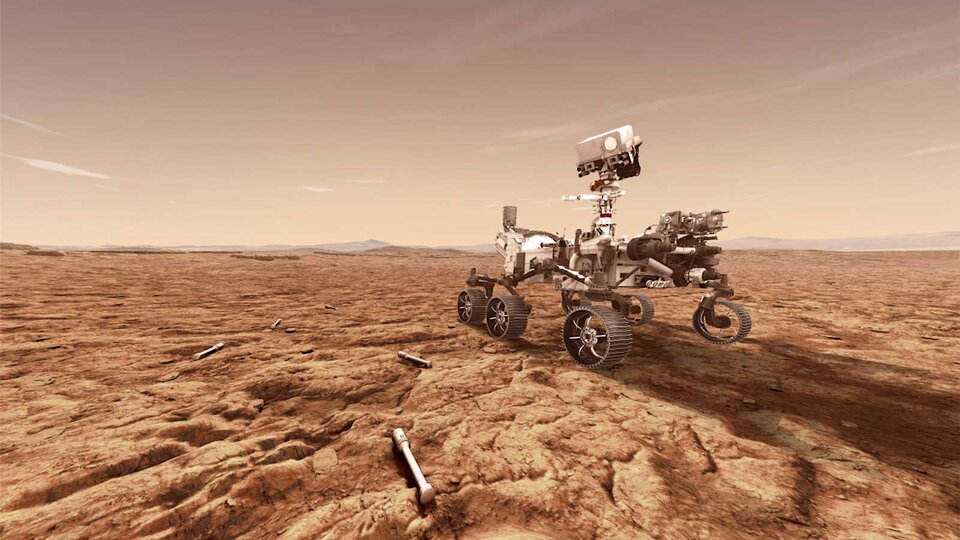
The recent successful data relay tests with NASA Perseverance bring the total Mars surface missions supported by Mars Express up to a record-breaking seven.
Mars Express has been an important part of Europe’s key role in the Mars data relay network and continues to deliver important science and services while remaining one of ESA’s lowest-cost missions to fly.
In the last couple of years, the veteran orbiter has helped monitor conditions at the Perseverance landing site, teamed up with ESA’s Trace Gas Orbiter to trial a new technique which could return up to 18 years’ worth of radio science in two months, and received a major software upgrade that is breathing new life into an instrument designed on Earth more than 20 years ago.
Find out more about the other new scientific and operational achievements Mars Express has enabled on the Mars Express blog.
Quelle: ESA
